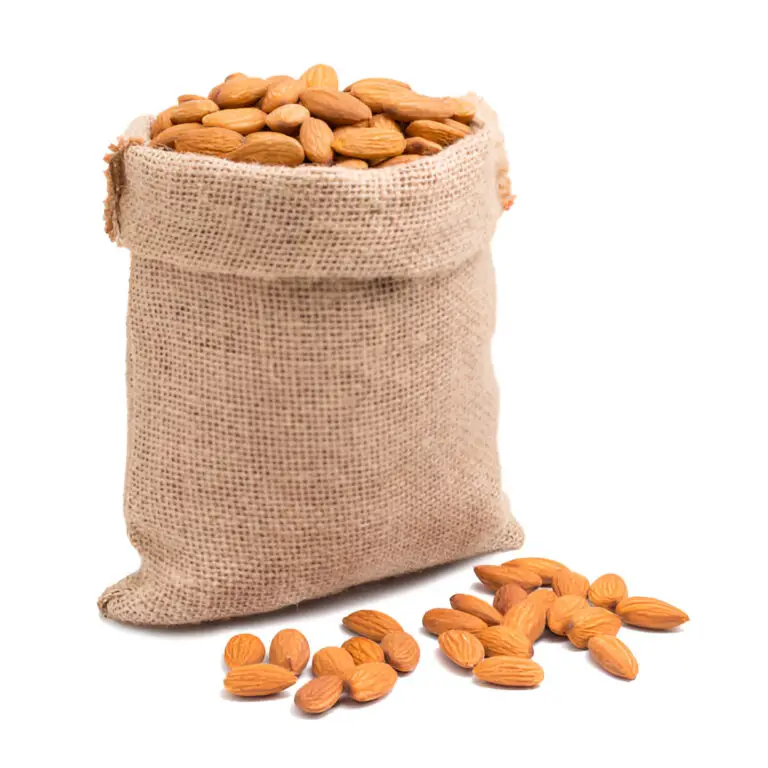What Do Bagels on Mold Look Like? Why Do Bagels Get Mold So Fast?

Bagels are a beloved breakfast staple, popular in many parts of the world. They are a great source of carbohydrates and make for a filling breakfast option.
There’s nothing quite like biting into a freshly toasted bagel for breakfast, slathered in cream cheese or jam. But what happens when you reach for that bagel only to discover a fuzzy green patch of mold on its surface?
Mold is a type of fungus that can grow on a variety of surfaces, including food. Like most foods, they can be prone to mold growth. Mold on bagels is not only unappetizing, but it can also be a health hazard. So, what does mold on bagels look like, and why do these beloved breakfast treats seem to get moldy so fast?
In this article, we’ll explore the ins and outs of bagel mold, from its appearance to the factors that contribute to its growth. Whether you’re a bagel lover or just want to stay informed about food safety, read on to learn more about this common issue.
Mold Formation on Bagels
Mold is a type of fungus that can grow on a variety of surfaces, including food. It thrives in warm, damp environments and can grow rapidly under the right conditions. Mold spores are ubiquitous in the environment and can easily attach themselves to food. It is easily grown on organic matter such as bread, cheese, and fruit.
Bagels are particularly susceptible to mold growth due to their high moisture content and the presence of tiny crevices on their surface. When exposed to warm and humid conditions, mold spores can quickly take hold and begin to spread.
The mold’s pigments are what give the mold on bagels its blue-green color. These pigments help protect the mold from UV radiation and other environmental stresses.
Why Do Bagels Get Mold So Fast?
Have you ever purchased a fresh batch of bagels, only to find that they’ve gone moldy within a few days? If so, you’re not alone. We’ll explore some of the reasons why bagels tend to get moldy so fast.
One of the main factors that contributes to mold growth on bagels is moisture. Bagels have a high moisture content, which makes them an ideal breeding ground for mold. If bagels are stored in a warm and humid environment, mold can begin to grow on them in as little as 24 hours. This is why it’s important to store bagels in a cool and dry place, and to consume them within a few days of purchase.
Another factor that can contribute to mold growth on bagels is the presence of preservatives. Many commercial bagels contain preservatives to extend their shelf life. While these preservatives can help prevent the growth of bacteria and mold, they can also create an environment that is more conducive to mold growth. This is because some types of preservatives can break down over time, releasing moisture and other compounds that can feed mold.
The ingredients used to make bagels can also play a role in mold growth. Bagels are typically made from flour, yeast, salt, and water, but some recipes may also include sugar, oil, or eggs. These ingredients can affect the moisture content and pH of the bagels, which can make them more or less prone to mold growth.
For example, bagels that are made with sugar or honey may be more likely to develop mold, as these ingredients can feed the mold and create a more hospitable environment for it to grow.
The way that bagels are handled and stored can also impact their susceptibility to mold growth. If bagels are not stored in an airtight container or bag, they may be exposed to moisture and air, which can speed up the growth of mold. Additionally, if bagels are handled with dirty or contaminated hands, they may be exposed to bacteria and mold spores that can lead to contamination.
Common Types of Mold Found on Bagels
There are many types of mold that can grow on bagels, including Aspergillus, Penicillium, and Rhizopus. These molds can vary in color from white to green to black and may produce a musty or earthy odor.
As mentioned above, there are several types of mold that can grow on bagels. Here are some of the most common:
- Aspergillus – This mold is typically green or yellow and can produce mycotoxins, which can cause respiratory problems in humans.
- Penicillium – This blue-green mold is commonly found on bread products and can cause allergic reactions in some people.
- Rhizopus – This black mold is often found on fruit and can cause food poisoning if ingested.
It’s important to note that any type of mold on food should be taken seriously and not consumed.
What Do Bagels on Mold Look Like?

When mold begins to grow on a bagel, it typically appears as fuzzy, green, or blue patches on the surface. These patches can spread quickly, covering large areas of the bagel in a matter of days.
One of the most important things to keep in mind when it comes to mold on bagels is that it can be difficult to detect. In some cases, the mold may be visible to the naked eye, but in others, it may be hidden beneath the surface. This is particularly true when it comes to bread products like bagels, which have a dense, compact texture that can make it difficult to spot mold growth.
If you suspect that your bagel may be contaminated with mold, there are a few key things to look for. As mentioned earlier, mold on bagels typically appears as fuzzy, green, or blue patches on the surface. These patches can range in size from small specks to large, spreading areas.
In addition to the visual cues, you may also notice changes in the texture and smell of the bagel. Moldy bagels may become slimy, moist, or spongy to the touch, and they may emit a musty or unpleasant odor.
Health Risks Associated With Consuming Moldy Bagels
While mold on bagels may be unsightly and unappetizing, consuming moldy bagels can be dangerous to your health. Mold produces toxic compounds called mycotoxins, which can cause a range of health problems. These mycotoxins can cause allergic reactions, respiratory problems, and even cancer in some cases. The risks associated with consuming moldy food increase with prolonged exposure.
Eating moldy bagels can lead to a range of health problems. Some common symptoms of mold exposure include:
- Respiratory problems, such as wheezing, coughing, and shortness of breath
- Allergic reactions, such as hives, itching, and swelling
- Headaches, dizziness, and fatigue
- Digestive problems, such as nausea and vomiting
Warning
In rare cases, mold toxicity can lead to more serious health problems, such as liver damage or neurological issues. Children, the elderly, and people with weakened immune systems are particularly vulnerable to mold-related illnesses.
If you experience any of these symptoms after consuming moldy bagels or after eating expired bagels, it is important to seek medical attention immediately.
Preventing Mold Growth on Bagels
Preventing mold growth on bagels is essential to ensuring their safety, maintaining their quality, and preventing bagels from going bad. Here are some tips to help prevent mold growth on bagels:
- Store bagels in a cool, dry place: Mold thrives in warm, humid environments, so it is important to store bagels in a cool, dry place. Keeping bagels in the refrigerator can make them last longer.
- Keep bagels sealed: Bagels should be stored in an airtight container or bag to prevent exposure to moisture and mold spores.
- Check bagels regularly: It is important to check bagels regularly for signs of mold growth. Discard any bagels that show signs of mold growth.
- Freeze bagels: If you are not going to consume your bagels within a few days, consider freezing them. Freezing can help to preserve the quality of the bagels and prevent mold growth.
- Toast before eating: Toast bagels before eating to help kill any mold spores that may be present.
Keep them sealed in an airtight container or plastic bag to prevent moisture from getting in. Check your bagels regularly for signs of mold, and discard any that show even the slightest signs of contamination.
The Role of Preservatives in Preventing Mold Formation on Bagels
Preservatives are commonly used in commercially produced bagels to extend their shelf life and prevent mold formation. One such preservative is calcium propionate, which is commonly used in the baking industry to inhibit the growth of mold and bacteria.
Calcium propionate works by altering the pH level of the dough, which creates an environment that is inhospitable to mold growth. By reducing the pH of the dough, calcium propionate prevents mold from thriving on the surface of the bagel.
While preservatives like calcium propionate can be effective at preventing mold growth, some people may prefer to avoid them due to health concerns. Some studies have suggested that consuming large amounts of preservatives may be linked to certain health problems, such as allergic reactions and digestive issues.
Tips 
If you’re concerned about preservatives, you may want to look for bagels that are made with natural ingredients and avoid products that contain calcium propionate or other artificial preservatives. Many natural and organic brands offer preservative-free bagels, which are made with ingredients like whole grains, honey, and molasses.
Another way to avoid preservatives is to make your own bagels at home. Homemade bagels are easy to make and can be customized to suit your tastes. By making your own bagels, you can control the ingredients and ensure that they’re free of preservatives.
Conclusion
In conclusion, mold on bagels is a serious health concern that should not be taken lightly. It can be difficult to detect, but it typically appears as fuzzy, green, or blue patches on the surface of the bagel.
Moldy bagels can lead to a range of health problems and can impact the taste and texture of the food. In addition to the potential health risks, mold on bagels can also impact the taste and texture of the food. Mold can produce enzymes that break down the structure of the bagel, making it soft and mushy. This can lead to an unpleasant, rubbery texture and a sour, off-putting flavor.
To prevent mold growth on your bagels, store them in a cool, dry place, keep them sealed, check them regularly, and discard any that show signs of contamination. By following these tips, you can help ensure the safety and quality of your bagels and enjoy them with peace of mind.






